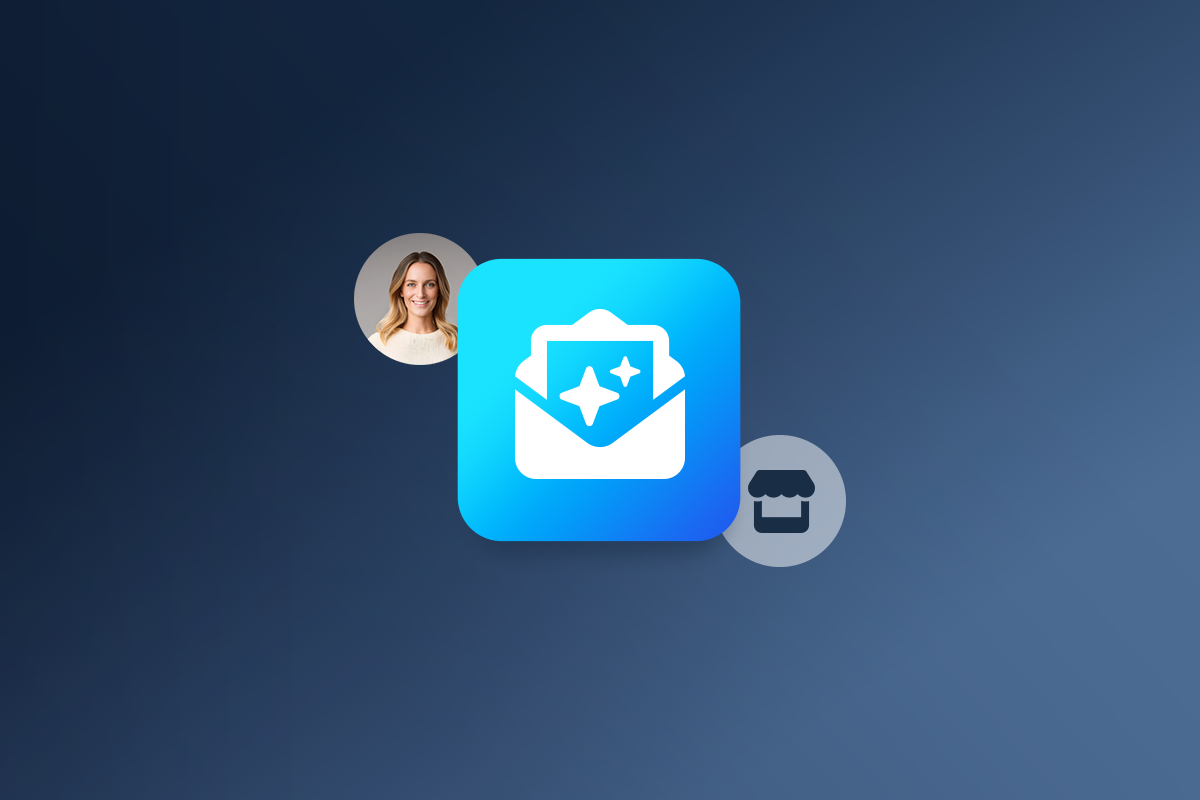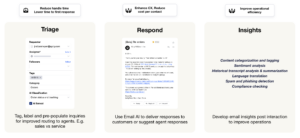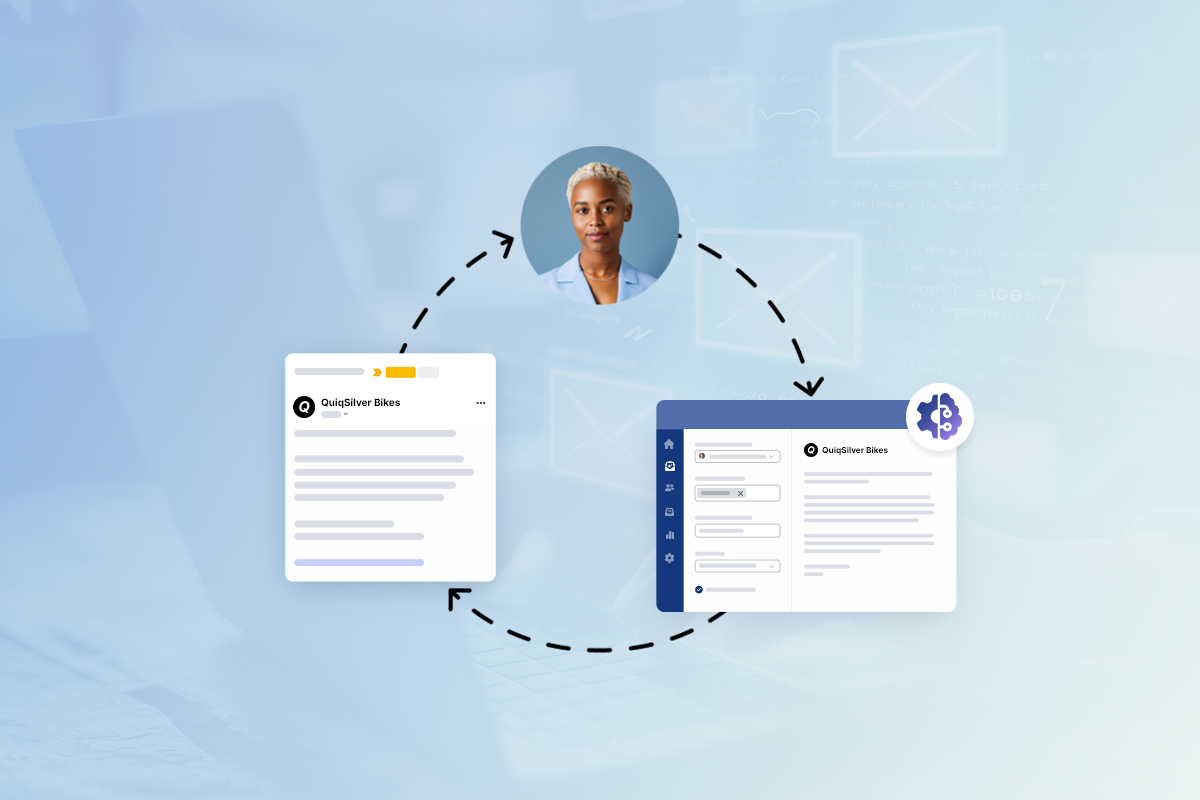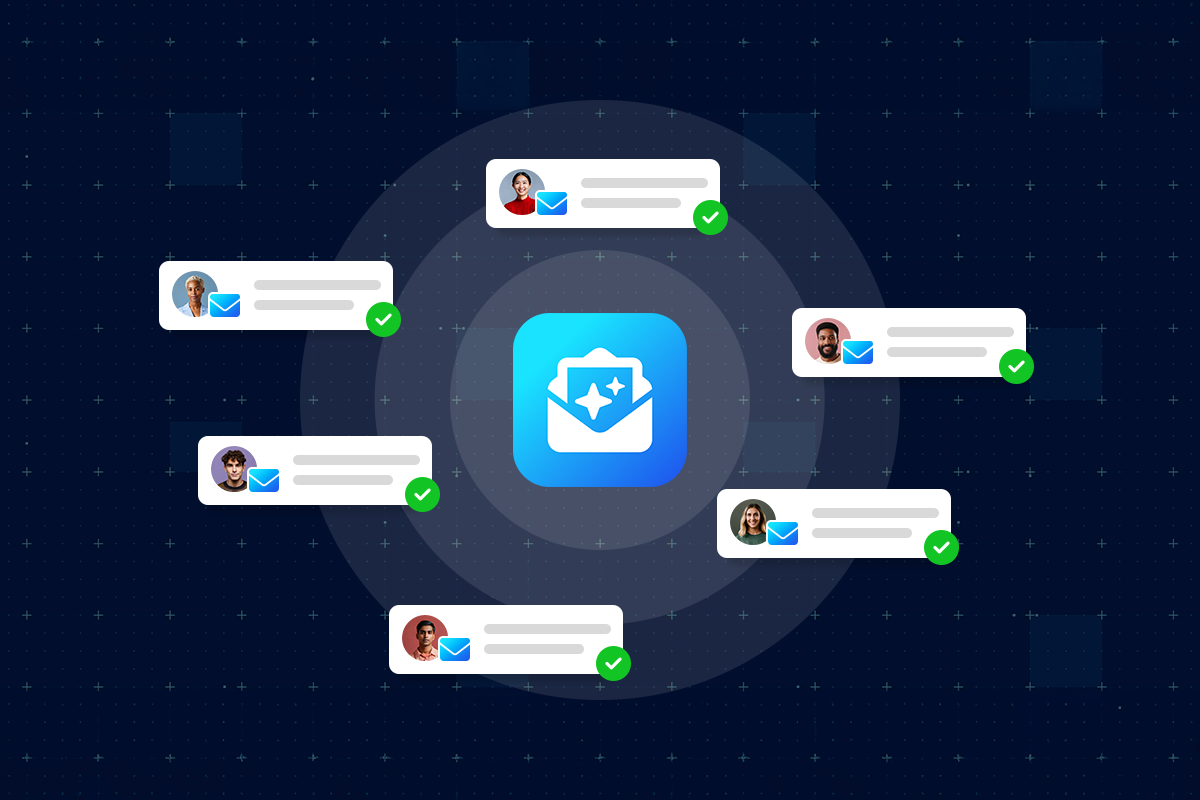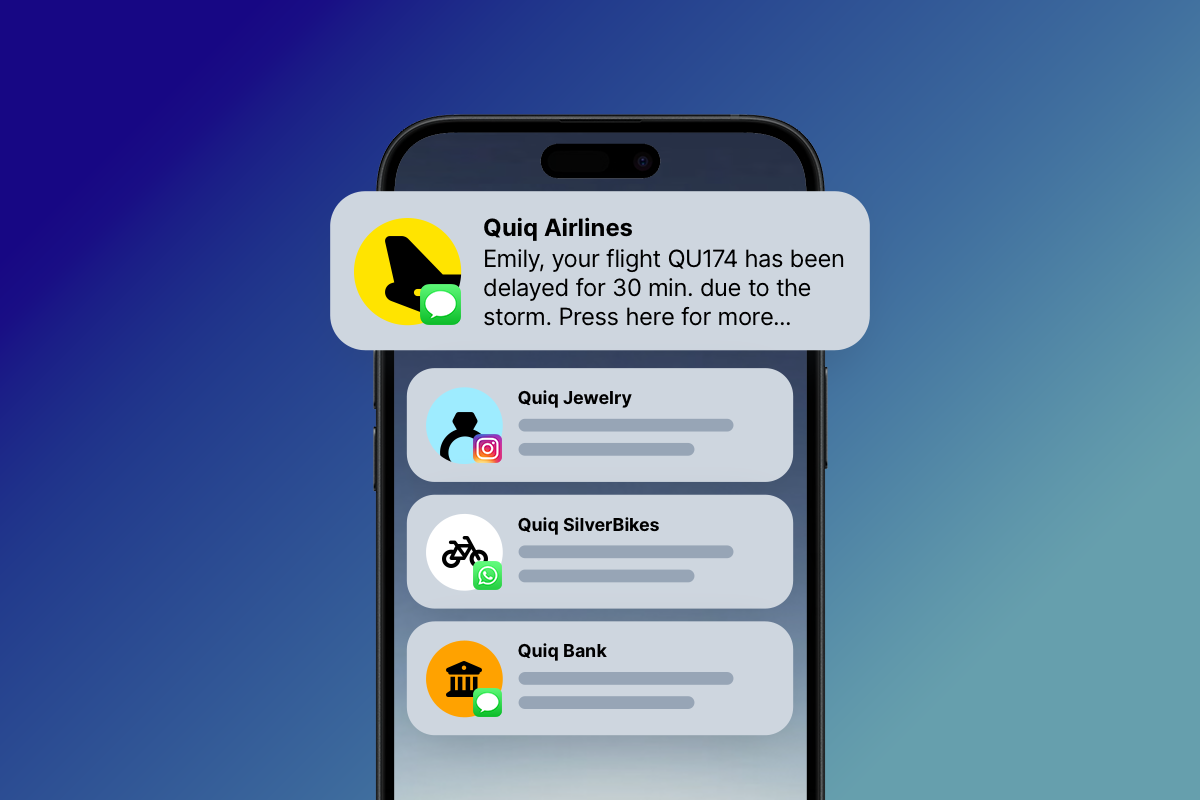Quiq is dedicated to helping enterprises move to the next generation of CX through customer-centric AI. Our journey began with an AI assistant that can improve your CX, grow revenue, and manage your costs. This is powered by Generative AI and Large Language Models (LLMs)—it all started in digital messaging, your customers’ most preferred channel, but has grown to encompass voice and email, too.
I sat down with my colleague Greg Dreyfus to take a deep dive into Email AI, explain why we decided to build it here at Quiq, show how it works, and explore the most effective ways to use it to drive CX outcomes.
Applying AI to Email Creates an Omnichannel Approach
Earlier this year, we launched Voice AI, applying the latest AI to your most expensive channel: phone. This delivers multimodal interactions with Voice and text messaging. It’s built with Large Language Models, state-of-the art language processing, text-to-speech, and fits with your existing telephony infrastructure.
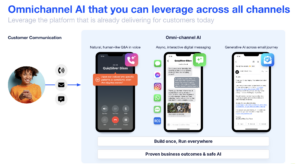
And now Quiq is delighted to announce Email AI! With the addition of AI for email responses through Quiq, you can now maximize your AI investment across your most meaningful channels, increasing the impact and time to value for your organization.
Our AI assistants use the same underlying platform, which means you can build once and run everywhere. You can also reuse all of your data, business logic, and system integrations across touchpoints. We’ve proven that these AI assistants can drive outcomes with the dozens of live examples we have in the market.
Why Apply AI to Email?
For a lot of businesses, email is their most voluminous channel. This is a statistic from the Connected Customer report from Salesforce, that cites that customers use multiple channels sometimes 8 or more.
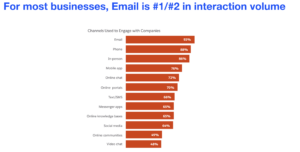
Source: Salesforce Connected Customer Report
Other channels are growing quickly, but email continues to rank #1 for popularity with customers.
Traditional Email Challenges are Well-Known
Email has a few problems that have plagued it as a channel from day one. During the webinar, I asked attendees:
Which of these is your biggest challenge with email?
- High inbound email volumes & constant backlog mean high turnaround times & costs
- Poor CSAT & CX
- Low agent satisfaction
65% of respondents chose High inbound email volumes & constant backlog mean high turnaround times & costs, which reinforces the fact that email is persistently expensive and hard-to-tackle for brands.
But beyond the high costs, which are driven by volume, email has other challenges, the biggest of which are:
1. Poor CX
According to Deloitte, 88% of companies are prioritizing the customer experience created from their contact centers. Yet, 26% of consumers feel that contacting customer support, especially through email, has become more challenging over time.
There’s a clear disconnect between the amount of time, effort, and money enterprise businesses are investing in CX and the experiences their customers are having on the other side of that—particularly via email.
2. Low agent satisfaction
Agent morale gets impacted with high ticket volumes and seasonal surges. Constant backlogs and broken threads further complicate the channel for agents, making it a frustrating experience for your contact center employees.
Email AI Solves Stubborn Channel Challenges

Quiq’s Email AI works across every stage of your email journey. It uses AI to triage, draft, respond to and analyze emails efficiently and quickly, ensuring consistent and personalized communication to your customers.
How Email AI works in nutshell
Let’s say a customer email comes in. With Email AI, we can improve agent efficiency by routing that to the right agent. You can resolve routine issues through generative responses or drafts for your agent. If you implement customer account specific information, you can extend this to answer even more complex questions. And finally, you can use AI and automation to analyze existing emails to identify opportunities to improve.
The best part is that it is easy to deploy: Email AI works with your existing email management platform, so no need to rip and replace.
Email AI Demo #1: Using AI to Respond to a Customer Inquiry
My colleague, Greg Dreyfus, Head of Solutions Consulting, showed how Quiq’s Email AI works with Zendesk to respond back to a customer inquiry with information about the order.
Check out how this all works, ultimately improving not only the customer experience but also the ticket record left behind in the email management platform thanks to spot-on AI categorization.
As you can see, the AI-powered categorization is extremely useful for ticket routing and analytics, too. After showing this first use case, we polled the audience to understand where they could see the generative component of Email AI being the most valuable in their contact center operations. Here is what they said.
Audience Poll #2
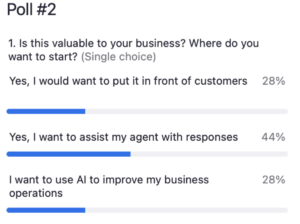
This made a lot of sense to us because, of course, your agents are the ones responding to customer emails. So, to the extent that you can use AI to provide responses for them to edit or review, you can make email incrementally more efficient with a phased approach to introducing AI into your existing workflows.
Email AI Demo #2: Using AI to Flag a Customer Inquiry as Sensitive
Knowing how to best use AI is critical to capitalizing on the efficiency gains it offers while minimizing risk. Quiq’s Email AI can deal with sensitive inquiries differently than those deemed not sensitive. Watch Greg demonstrate exactly how this works and how our AI handles sensitive communications differently.
Of course, we wanted to get a sense from attendees about how often they think their teams would need sensitive conversations treated differently by AI, so we polled them a third time after demonstrating the use case.
Audience Poll #3
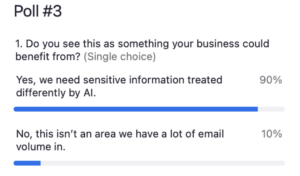
Unsurprisingly, 90% of those who responded indicated that they need AI to handle sensitive communications differently—which is exactly why we’ve approached Email AI with the customizability that we have.
To recap, Greg went over Triage and Response use cases for Email AI. While we didn’t cover a demonstration of Insights, that’s a third area of major business impact that we’d love to talk to you about if you’re interested.
5 CX Outcomes You Can Expect from Email AI
Now with our application of GenAI to email, we’re super excited to impact the CX outcomes that matter to your business. Here’s the top 5 benefits you can expect to realize first when you adopt Quiq’s AI for email responses, triaging, insights, and more:
- Faster response times
- Personalization at scale
- Boosts customer retention
- Enhanced data insights
- Improves bottom line
Watch the Full Webinar On-Demand
If you attended the webinar live, thank you for joining us! If not, we invite you to experience the complete walkthrough directly: Watch the webinar on-demand. You can learn more about AI Studio, the environment we use to build all AI assistants, right here.

